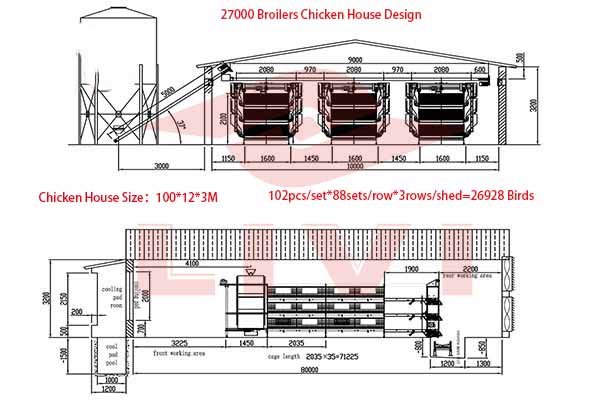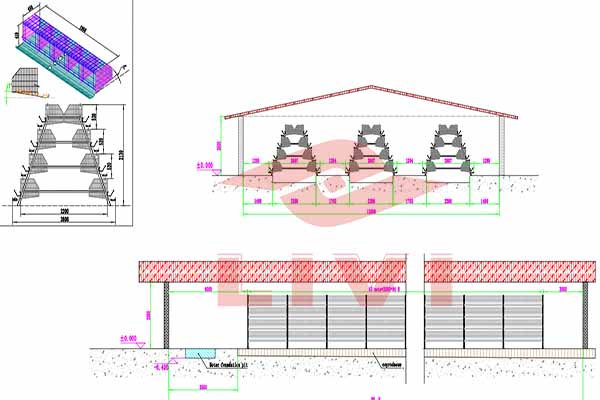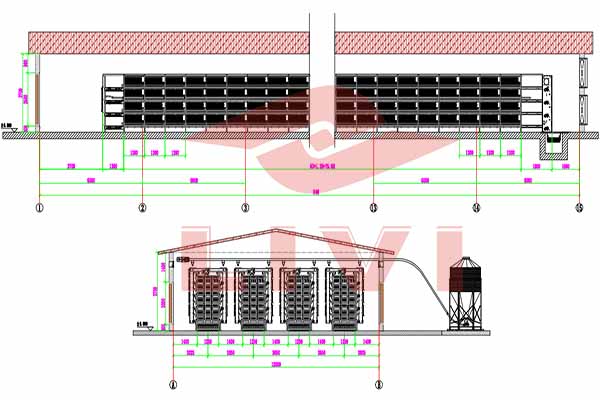How Do Broiler Cage Farming Control Light And Feed
To rear chickens effectively, improve survival rates, reduce feed-to-meat ratio, and increase slaughter weight, the ultimate goal is to enhance farming profitability. Achieving high survival rates, optimizing feed-to-meat ratio, and maximizing slaughter weight all hinge on scientifically sound management practices, with one of the most crucial being the regulation of lighting and feeding. Livi Machinery shows you How Do Broiler Cage Farming Control Light And Feed and welcome to livi machinery to buy chicken equipment.
Effects of Control Light and Feed
Appropriate lighting can accelerate the growth rate of broiler chickens, enhance blood circulation, stimulate appetite, facilitate calcium and phosphorus absorption, and boost immunity. However, improper lighting schedules, excessive or insufficient light intensity, and overly long or short lighting durations can all have adverse effects on chickens.
The key lies in effectively controlling both feeding and lighting. During the early stages of broiler growth, controlling the growth rate of muscles, adjusting light intensity. It promote visceral growth and development, and enhancing disease resistance are essential. This approach addresses challenges such as difficulties in treating diseases in later stages of broiler growth, high costs, and high mortality rates. Leveraging the compensatory growth characteristics of broilers through light and feed control helps regulate feed intake. It reduce feed-to-meat ratio, ultimately minimizing farming risks, and enhancing the economic efficiency of broiler growth.
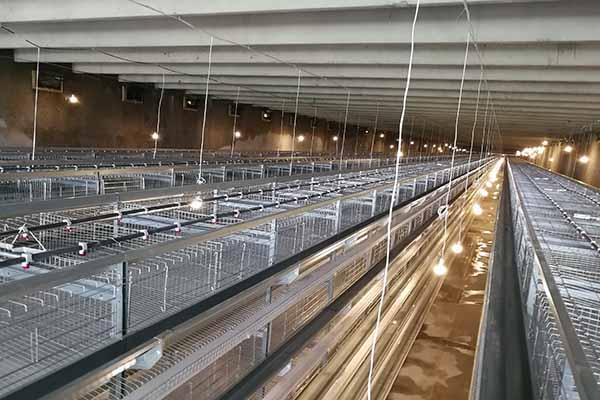
Feed Control
It is not advisable to control feed for chicks during the first week; instead, leave feed troughs open to ensure sufficient feeding. Chicks’ digestive and immune systems are not fully developed, requiring adequate feeding.
Feed control can commence after 12 days of age, starting with intervals of one hour between feeding, gradually increasing the duration without feed. Incrementally increase the feed control duration, adding half an hour each day, up to a maximum of 4 to 5 hours, but not exceeding 6 hours. Longer feed control durations increase hunger in chickens, prompting faster feeding. This reduces the time feed spends in troughs, minimizing bacterial and fungal growth and thus reducing the risk of oral infection.
The crop of broiler cage farming is elastic and can store a significant amount of food. Frequent opening and closing stimulate crop development, reducing the incidence of crop inflammation. Rapid feeding stimulates glandular stomach secretion and peristalsis, indirectly promoting gastric health and reducing the incidence of glandular stomach inflammation.
Light Control
The primary purpose of light control is to ensure chickens rest well, maintain bodily balance, and facilitate better muscle growth. Light control follows certain standards, with 24 hours of lighting for the first 3 days to accommodate chicks’ learning to feed from each other. Prematurely turning off lights may lead to dehydration and death.
From the 4th day onwards, lights can be turned off gradually, starting with half an hour and increasing gradually. Lights should not be turned off for too long within the first 7 days, ideally no more than an hour (primarily to acclimate chickens to sudden light cessation stress). As mentioned earlier, the immature liver of chickens means that turning off lights is not just for rest but also for feed control. It excessively long periods without light can lead to hypoglycemia.
After 15 days, once the liver and intestinal absorption function of broiler cage farming have fully developed, light and feed control duration can be extended. By this time, chickens will have accumulated some fat reserves, increased feed intake. And it will not experience hypoglycemia due to feed depletion.
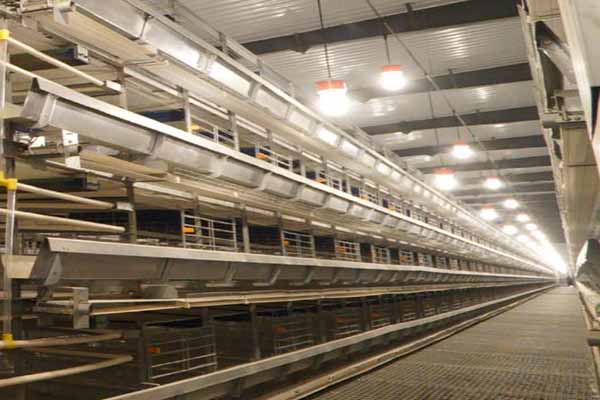
Automatic Chicken Raising Equipment From Livi Machinery
In addition to scientific and reasonable feeding management, modern poultry farms can rely on advanced technological equipment to improve production efficiency and management level. In this regard, Livi Machinery’s automated feeding equipment and automated lighting equipment are extremely valuable tools.
Firstly, Livi Machinery’s automatic feeder for poultry adopts advanced technology, which can precisely control the feeding amount and frequency. This automatic feeder for poultry can automatically feed the chickens at appropriate times and quantities according to the needs of the flock. It ensure that the chickens receive sufficient nutrition, increasing feed utilization, and reducing waste. Additionally, automatic feeder for poultry equipment can reduce the labor intensity of the feeding staff and improve work efficiency.
Secondly, Livi Machinery’s automated lighting equipment can intelligently regulate the lighting conditions in the chicken coops. Through precise control of lighting time and intensity, these devices can simulate natural lighting changes, providing the most suitable lighting environment for the flock. It promote growth, development, and egg production efficiency. Moreover, automated lighting equipment can maintain stable lighting conditions, reducing the impact of external environments on the flock.
In summary, Livi Machinery’s poultry equipment can not only assist poultry farmers in controlling lighting and feeding in the chicken coops to a certain extent but also improve production efficiency, reduce costs, and enhance output quality. The adoption of these advanced technological equipment will bring new opportunities and challenges to the poultry industry. It help poultry farms achieve sustainable development.
If you would like to learn more about Livi Machinery’s automated poultry equipment, please leave us a message. We will provide you with a quote for automated poultry equipment.


